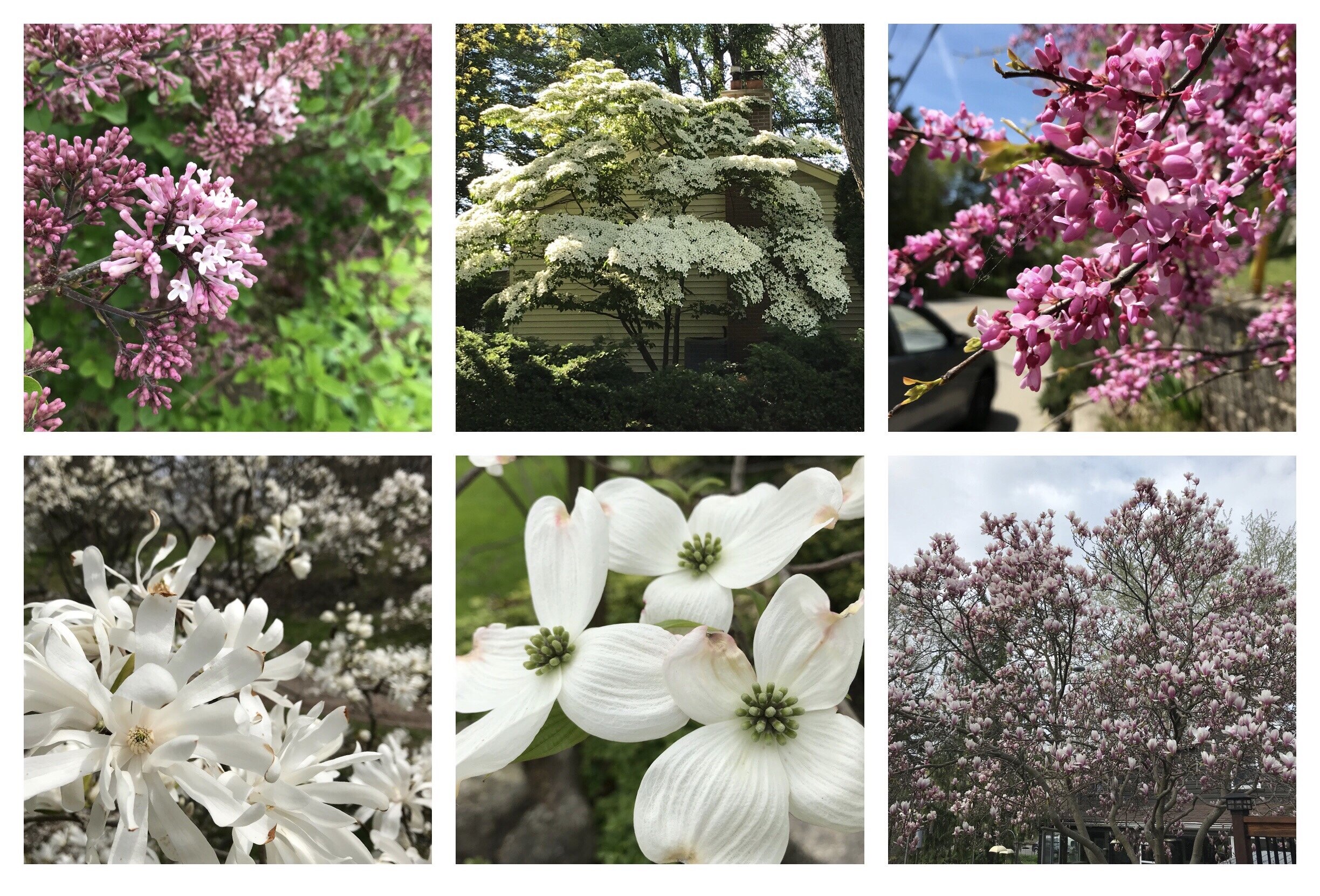No room for bad attitudes…
Well- spring is in full effect. It’s the time of year when we watch excitedly as our ‘garden babies’ emerge and grow with each passing day and we curse under our breath (or aloud) when our weeds do the same.
The striking spring flower display brought to you by shooting star (Dodecatheon). Garden baby? Yes I think so! (I just had to show a photo of ‘the good’ before I delve into ‘the ugly’).
Then we spot those plants that fall somewhere in between… our once garden babies who have grown up, and in doing so have decided to flex their botanical muscles to power their way through the garden. Yes, I am talking about those aggressive spreaders.
Perhaps you have a patch of lily-of-the-valley (Convallaria majalis) making a run for your grass or goutweed (Aegopodium podagraria) that thinks it should be the only plant in your flower bed, or periwinkle (Vinca minor) attempting to swallow your perennials. The problem is all the same- one plant expressing it’s desire for garden dominance… otherwise known as a plant with a bad attitude.
This year, I looked out at two problem areas in my yard- both a result of neighbours’ plants thinking that the grass is greener on my side of the fence (it’s not). Couple that incorrect assumption with a few years of neglect and I’ve got myself a nice little afternoon project.
Take this lily of the valley…
How did this happen?? Oh. Right. I had kids.
or how about this goutweed…
These are two plants that spread aggressively via underground stems called rhizomes. The rhizomes grow out into new territory and sprout new plants at intervals (nodes) along the way. This means that to effectively remove plants that spread in this manner, all the underground portions need to be removed- otherwise new plants can grow and emerge from the left-over fragments. Some other plants that grow aggressively in this way include:
Chameleon plant (Houttuynia cordata ‘Chameleon’)
Japanese spurge (Pachysandra terminalis)
Various mint species (Mentha spp.)
Obedient plant (Physostegia virginiana)
Gooseneck loosestrife (Lysimachia clethroides)
Lily of the valley and a good glimpse of it’s underground growth. Note the roots growing at intervals along the rhizome indicating the location of nodes.
So I set to work with a spade, and some elbow grease. Starting at the periphery of the problem area, I dig down, get the spade deep beneath the plants and lift them; then I gently loosen the plants from the soil by hand. Luckily my garden soil is quite sandy which makes root systems fairly easy to work out of the ground. It almost becomes a game- how long of a ‘root’ can I pull out and how many plants will be attached to it?
Goutweed and it’s underground network of roots and rhizomes.
If you garden on clay soil, or your ‘bad attitude plant’ has worked it’s way into an area containing dense fibrous root systems of other plants (such cedars or Norway maples)… I feel for you. I truly do. Your removal job becomes much much harder… sometimes even impossible. In this situation, smothering the whole patch may be your only option. This is done in three easy steps:
Chop the plant down to ground level
Lay down good quality landscape fabric over the area ensuring a sufficient overlap of adjoining pieces (at least 4 inches/10 centimeters of overlap where two fabric pieces join)
Cover the landscape fabric with a thick layer of mulch (3-4 inches or 7-10 centimeters)- the idea is to completely block out the sun so that the plant doesn’t even think about growing
Unfortunately the area becomes off-limits to planting until you are sure the offending plant won’t come back. The fabric and mulch should be left in place for at least a year (I would leave it for 2) at which point the landscape fabric can be removed and you can reclaim your garden territory! (It is important to note that landscape fabric is not intended to be a permanent fixture in a garden, and it’s removal is an important step! More on that in a future post.)
Take home points
If you have something that appears to be taking over your garden- first determine how it is spreading so you will know how to control it. The plant could be seeding prolifically, spreading by above-ground runners that root into the soil at intervals, or through below-ground structures such as rhizomes (the focus of this post).
At the very least, make it a yearly task to keep ‘bully plants’ in check. If you are not prepared to make the commitment to yearly maintenance, remove the plant from your garden entirely. Your ‘future self’ will thank you.
Dig deep- literally and figuratively. You will need patience to remove aggressive spreaders so harness your inner yogi and think of the process as meditative. When dealing with underground spreaders, you will also need to dig deep to see exactly what you are dealing with below the soil surface and to remove the plants effectively.
Know when to throw in the towel. As the saying goes: ‘you win some, you lose some’. Sometimes it is just easier to accept defeat and opt to smother the plants as opposed to pull them.
Avoid making the same mistake in the future. Unless you are actually looking for a plant to cover a large area, run from any plant that boasts ‘quick coverage’ or ‘fast spreading’, two terms that should be interpreted as ‘aggressive’. Oh- and if a neighbour or friend is giving away plants ‘because they have way too much’ in their garden- just smile and say ‘thanks but no thanks’.
.










